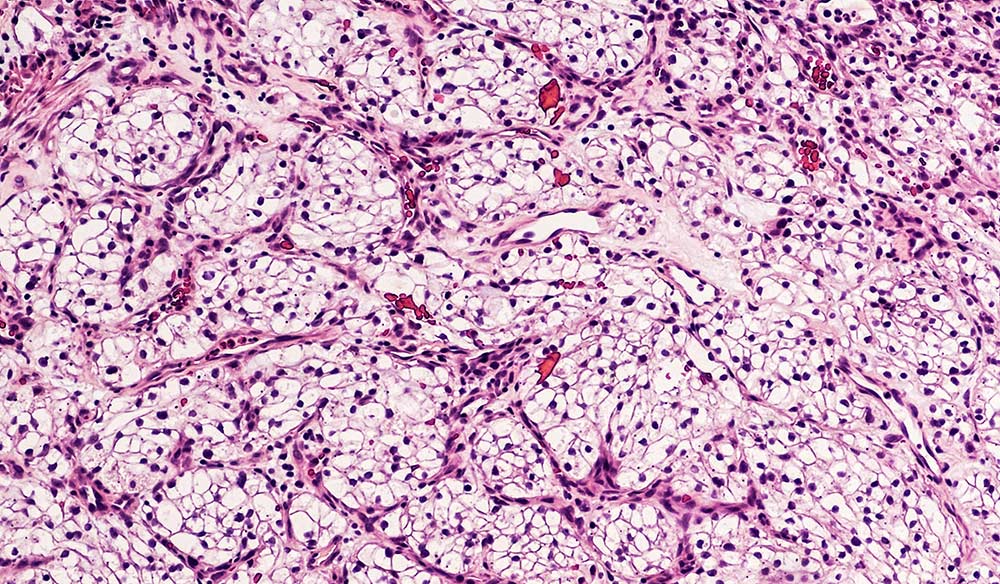General Information
If you are found to have a kidney mass that needs treatment, make sure you see a urologist that offers all of the latest minimally invasive treatment options. Most urologists today do not offer these options and will do open surgery on every patient! There is no need to have a big, painful incision in most cases.
Most kidney cancers are discovered incidentally when found on abdominal imaging (ultrasound, CT scan, or MRI) done for other reasons. The majority of patients have no symptoms from their cancer. Some will have blood in their urine (either gross-one can see it with the naked eye- or microscopic). Pain is sometimes felt at the site of the cancer.
When a mass is found in the kidney that is not a simple cyst (fluid filled sac, universally benign, NOT cancer), there is a 90 percent likelihood that the mass is cancerous. Biopsies of these masses are NOT routinely done. The reason for this is that if no cancer is found on the biopsy, it does not mean there is no cancer in the remainder of the mass not biopsied. There is a significantly high false-negative rate with kidney biopsies. The universally accepted, BEST way to determine if it is a cancer is to remove the mass and then have it looked at by a pathologist.
Before a kidney mass that is presumed to be cancer can be treated, tests need to be done to see if the cancer has spread beyond the kidney to other parts of the body. Kidney cancer typically will spread to the lungs or the bones, so usually a plain xray of the chest will be done or a chest CT scan. A bone scan may be necessary, as well as some other routine blood tests.
If these tests show no evidence of spread of the tumor, then the chance of successful cure with surgery is highly likely. If the cancer has spread outside of the kidney, then the likelihood of cure is less, the amount depending upon the amount of spread of the tumor. If the cancer has spread, then consultation with a medical oncologist is generally recommended to see if any treatment protocols with chemotherapy or immunotherapy, sometimes in combination with surgery, would be advisable.
Kidney Cancer Statistics
- Kidney cancer accounts for 2 percent of all cancers in the United States annually.
- 30,000 cases are diagnosed each year and 12,000 people die each year of the disease.
- It is more common in males and usually occurs between the ages of 50 and 70.
- If diagnosed in a timely fashion, most kidney cancers are curable and overall survival rates are 79 to 100 percent.
Kidney Cancer Treatment
There are a number of ways to treat localized kidney cancers. These include:
- Open radical nephrectomy: the entire kidney is removed with the surrounding fat and adrenal gland.
- Open partial nephrectomy: that part of the kidney with the tumor is removed, leaving the rest of the kidney intact.
- Laparoscopic radical nephrectomy: same as open radical nephrectomy, but done through small “key-hole” incisions rather than a large incision.
- Laparoscopic partial nephrectomy: same as open partial nephrectomy, but done through small incisions as in #3.
- Cryoablation: freezing of the tumor to kill the cancer. This can be done laparoscopically or percutaneously through small incisions.
- Radiofrequency ablation: radiofrequency energy used to superheat the tumor to try and kill it.
Open radical nephrectomy has been the treatment standard for years, but now there is quite a bit of data showing that laparascopic nephrectomy is equal in terms of cancer cure with quicker recovery. Smaller tumors can be treated with laparascopic partial nephrectomy, cryoablation, or radiofrequency ablation, thereby preserving most of the kidney that does not contain tumor.
It appears that laparoscopic partial nephrectomy will be as efficacious at curing the cancer as radical nephrectomy, but we do not have long term results yet. Cryosurgery is 95 percent effective at treating tumors smaller than 5 centimeters. For tumors that are 3 centimeters or less, success is nearly 100 percent with up to four year follow-up available. Radiofrequency ablation does not appear to be as promising as cryoablation. Each of these modalities are potentially beneficial as they are minimally invasive AND allow preservation of the normal parts of the kidney.
Tumors that are located in middle of the kidney are more appropriately treated by laparoscopic radical nephrectomy. If a patient has decreased kidney function already and has a large tumor or one that is in the middle of the kidney, then an open partial nephrectomy, although more invasive than other options, would be advised in order to preserve some of the kidney and try to prevent dialysis.

